
The Eight Dollar Mountain area is an easily accessible botanical hot spot in southern Oregon, where you will find a wide variety of interesting wildflowers. There are serpentine wetlands and meadows, Jeffrey pine savannahs, hikes along a river, and forested hillsides. This is one of the largest serpentine areas in North America, and the harsh soils support a number of rare plants.
The area includes units managed by a number of different agencies, including the Eight Dollar Mountain Botanical Wayside (BLM), Eight Dollar Mountain Botanical Area (USDA), and the Eight Dollar Mountain Preserve (Nature Conservancy).
Note that you can click on any of the photos below to get a larger view. I’ll show some of my favorites, with a more complete collection in the gallery at the end of the article.
The TJ Howell Botanical Drive
The best way to see this area in a short time is to drive along the TJ Howell Botanical Drive, a 7.5 mile interpretive drive that runs along the Wild and Scenic Illinois River Corridor. This covers the easiest to reach botanical areas that run along the south side of Eight Dollar Mountain. It doesn’t include the Nature Conservancy site, which is on the east side of the mountain (which we didn’t visit on this trip).
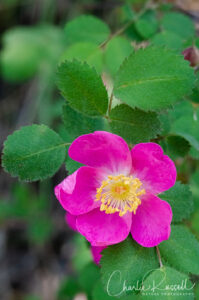
From Selma, Oregon, head south on Highway 199 for about 3 miles, then turn west onto Eight Dollar Road (aka Illinois River Road, or Forest Road 4201). About 1 mile in you will come to a parking lot on your left, which is the starting point for this drive. The drive runs 7.5 miles west from this point, although you can go farther if you wish. Keep an eye out for interesting roadside flowers – we found quite a few interesting things along the way.
Along this drive you will see the Eight Dollar Botanical Wayside, the Little Falls trail, Josephine Creek, the Days Gulch Botanical Area, and other points of interest. If you continue another 7 miles past the end of this drive you can also visit the Babyfoot Lake Botanical Area, which we didn’t reach on our trip.
When I give the mileage to a point later in this article, I’m using this parking lot as the starting point.
Little Falls Loop
Profile
Move your mouse along the elevation graph to show the location on the map. The Refresh icon will re-center the map. The Expand icon will expand to full screen.
Eight Dollar Botanical Wayside
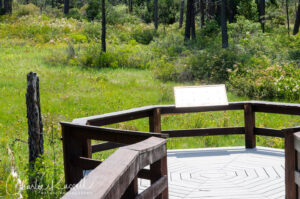
This is the starting point for the TJ Howell Botanical Area. From this parking lot you can hike the Jeffrey Pine Loop (a 1 mile loop), close to the Illinois River (we did not hike that way this time). You can download this map. On the north side of the road there is driveway that leads up the hill – walk up the hill, because the only parking at the top of the road is handicap parking (it is a very short distance).
This brings you to the Eight Dollar Mountain Interpretive Boardwalk, a wheelchair-accessible boardwalk that takes you out over a serpentine Darlingtonia fen. There are several rare plants in this area. The boardwalk is about 0.3 miles out and back, very easy.
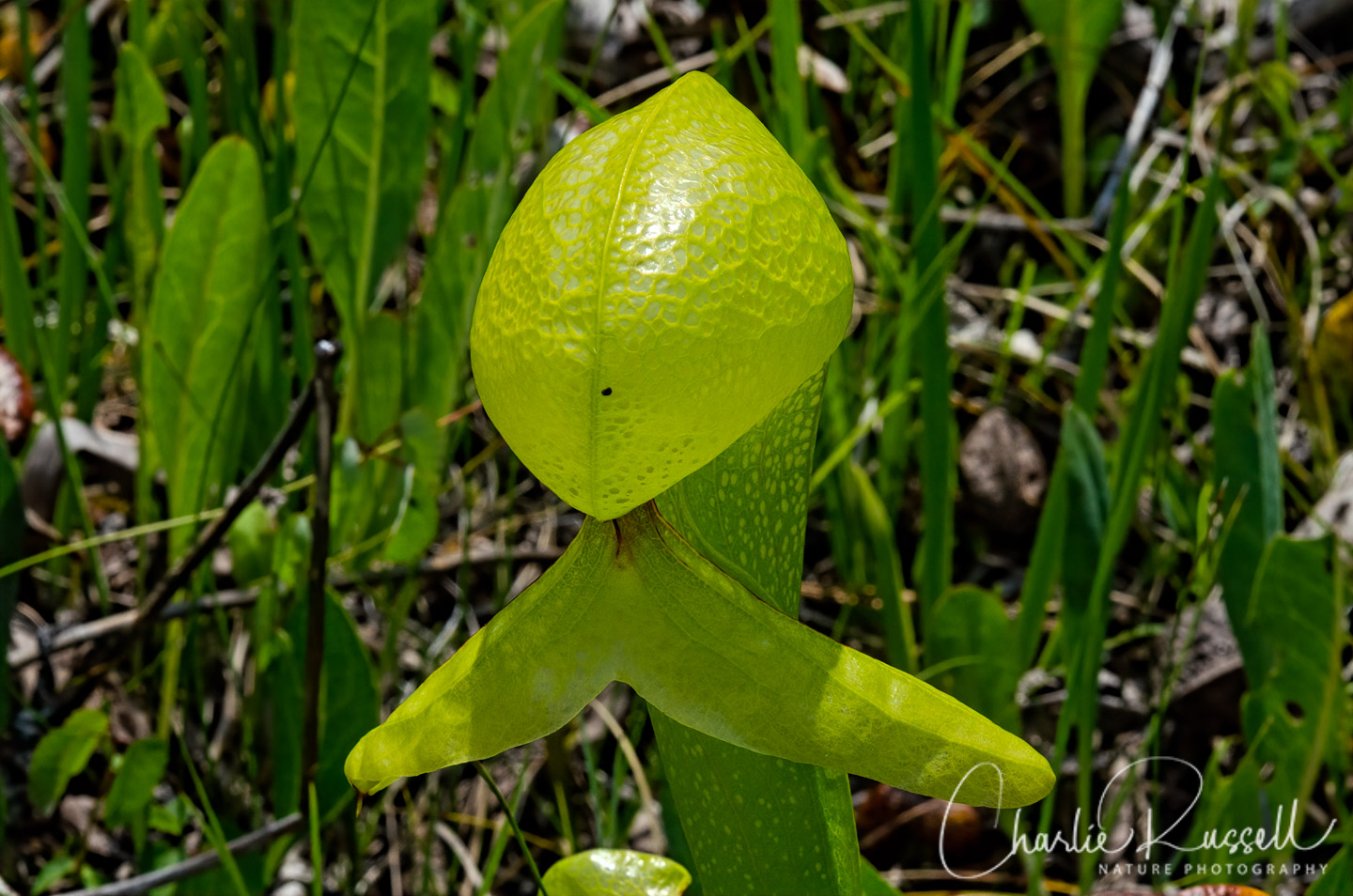
We found Largeflower rushlily here, which is one of the very rare plants you will find in this area (listed as “threatened” by the State of Oregon).

There is a lot of Western azalea here, although they were just about finished blooming when we visited.
Little Falls Trail
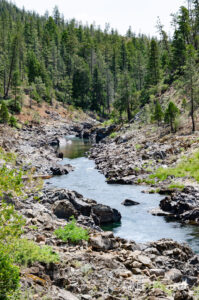
About a mile further along Eight Dollar Road you will find the Little Falls Campground. At the south end of the parking lot you will find the Little Falls trailhead, which takes you down a hillside and then along the bank of the Illinois River (see the track in my map earlier in this article). It was a bit dry on this visit, BUT if you keep your eyes open you can find some treasures along the way.
We were surprised to find California lady’s slipper orchids tucked in a corner of the trail heading down the hill.
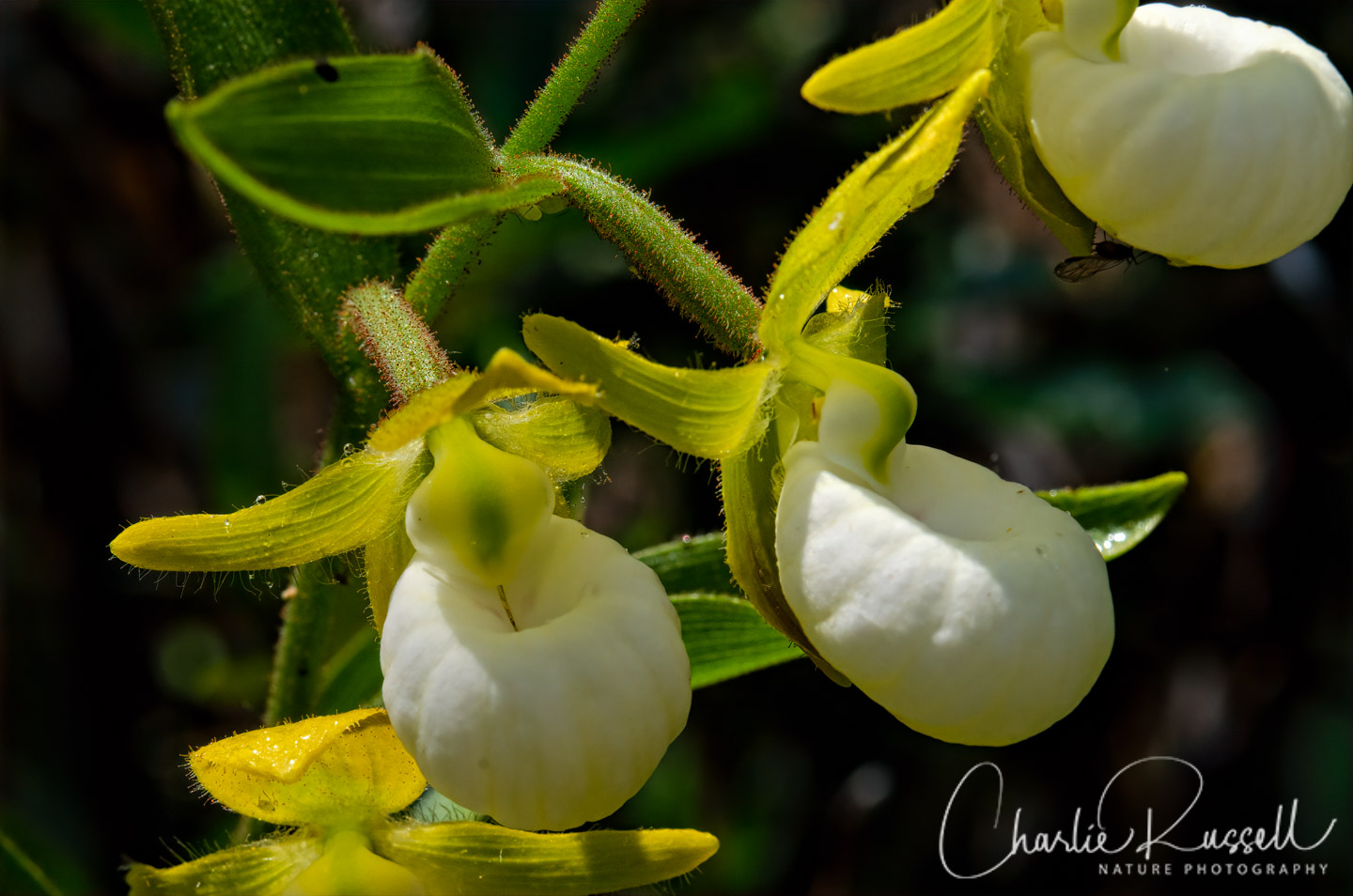
We found quite a few Harvest brodiaea’s on the path as it paralleled the river.
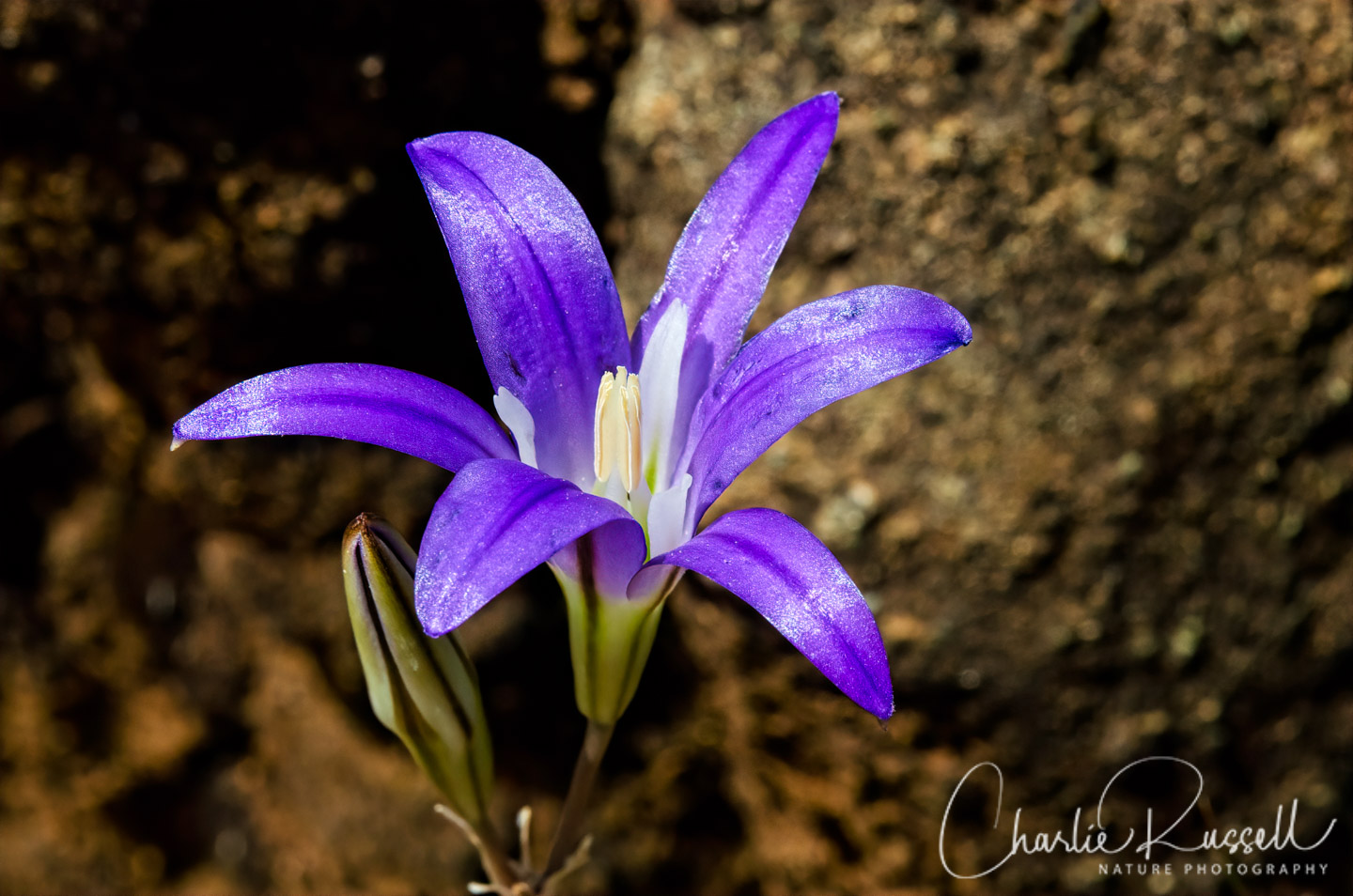
Days Gulch Botanical Area
At 1.8 miles you will cross a bridge over the Illinois river. At 2.5 miles look for Forest Road #023 on your right. It wasn’t clearly marked, but it was the first dirt road after the bridge. A short distance in you will find a parking lot – this is the Days Gulch Botanical Area. There isn’t a trail here, you can just wander about looking for wildflowers. This mostly is a Jeffrey Pine Savannah (again, serpentine soil), but you will also find a great hillside Darlingtonia bog.
This was (on this visit) the most diverse site for wildflowers. Lots of interesting plants to find as you poke around.
Howell’s mariposa lily was one of the reasons why we visited this area. This is found only in the Illinois River Valley in Oregon, and it is listed as “threatened” by the State of Oregon. We found these in Days Gulch, as well as on some exposed hillsides on Eight Dollar Road near the bridge.
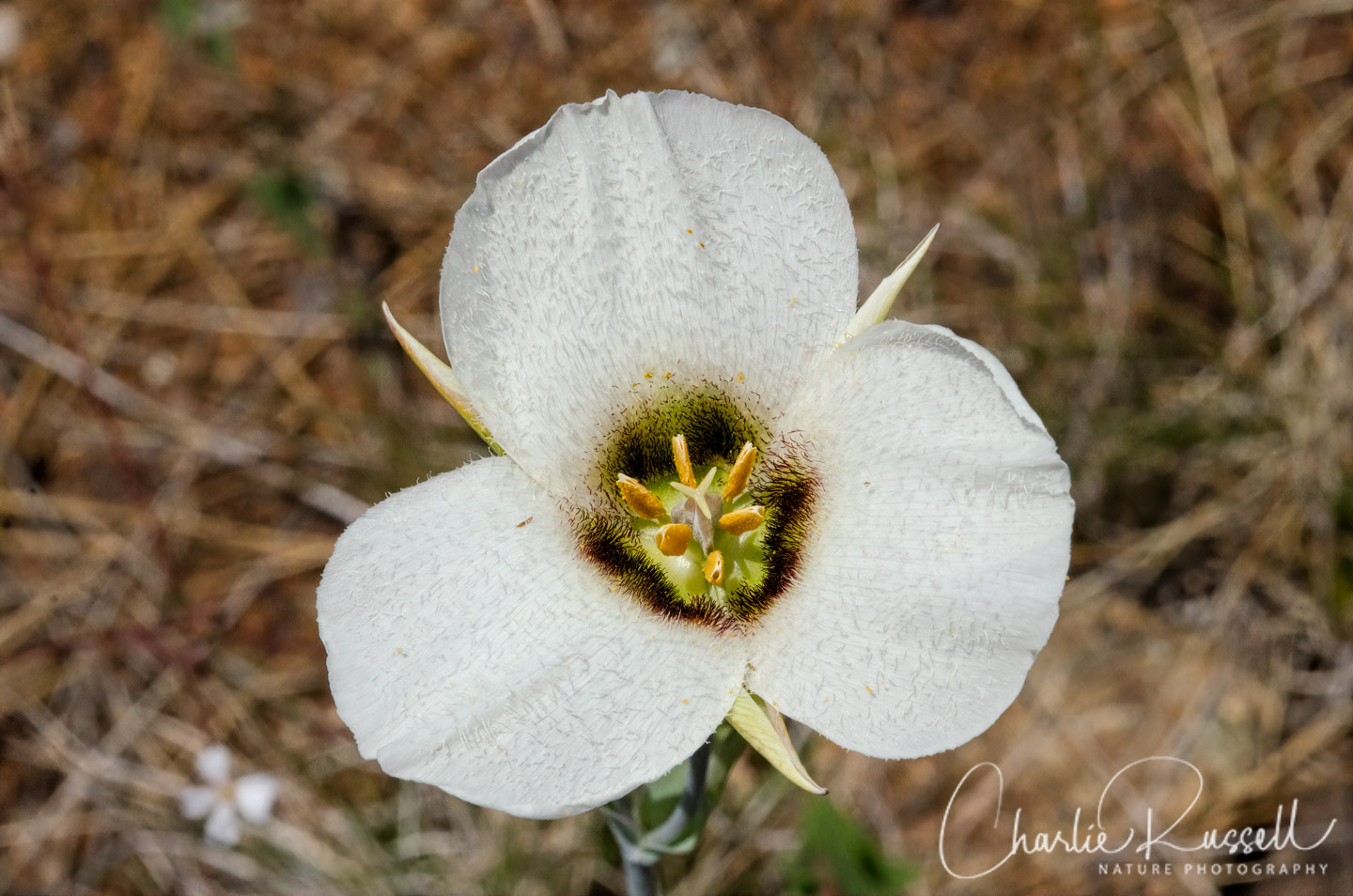
Bach’s downingia was an interesting find. I’m used to finding Downingia in vernal pools in California. These were in the open area near the parking lot. Very low growing plants, you have to look carefully.
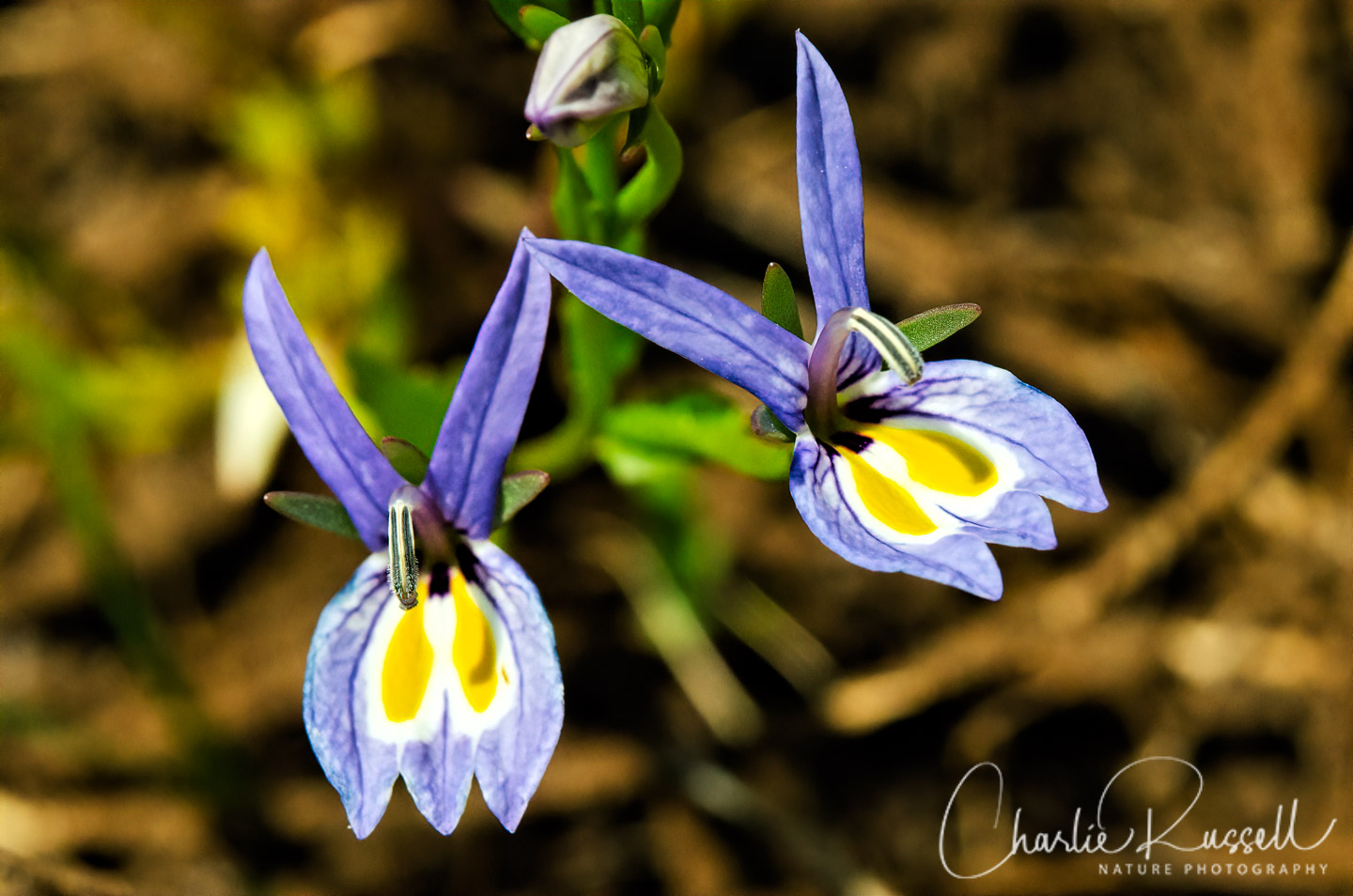
Snapdragon skullcap was another fun plant to find, something I’ve never come across before. These were higher up the hillside from the parking lot.

Further away there was a hillside seep that was full of California pitcher plant, many of which were blooming. Such an interesting plant!
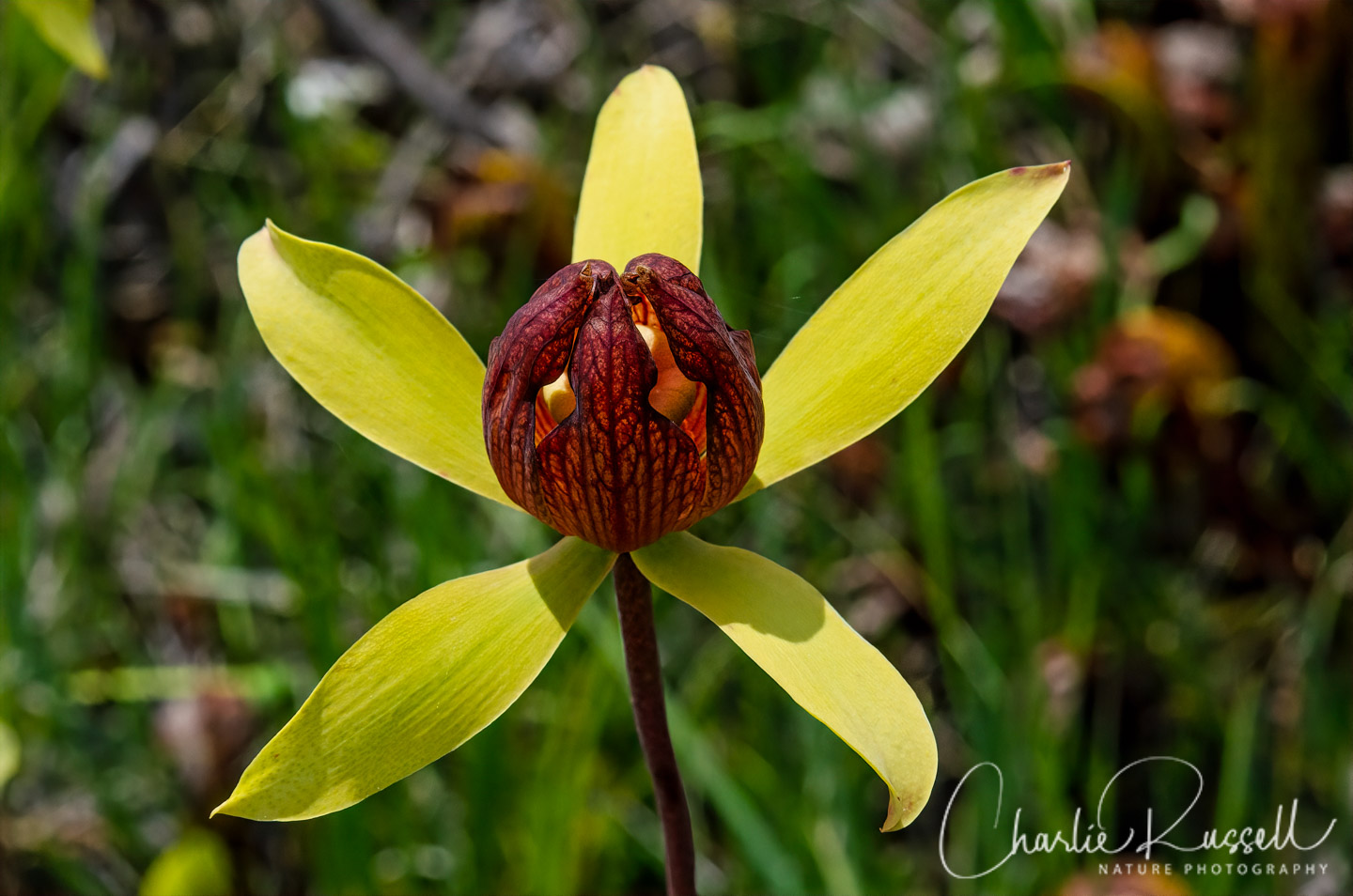
I have more flower pictures in the gallery below.
Continuing Up the Road
Past Days Gulch the road starts to climb up into the mountains. You get some great views over the river and Days Gulch, and you will find a different selection of wildflowers along the roadside. Unfortunately, we didn’t have time to go all the way to the Babyfoot Lake Botanical Area, which is around 10 miles past Days Gulch.
Several kinds of Iris, including Siskiyou iris.
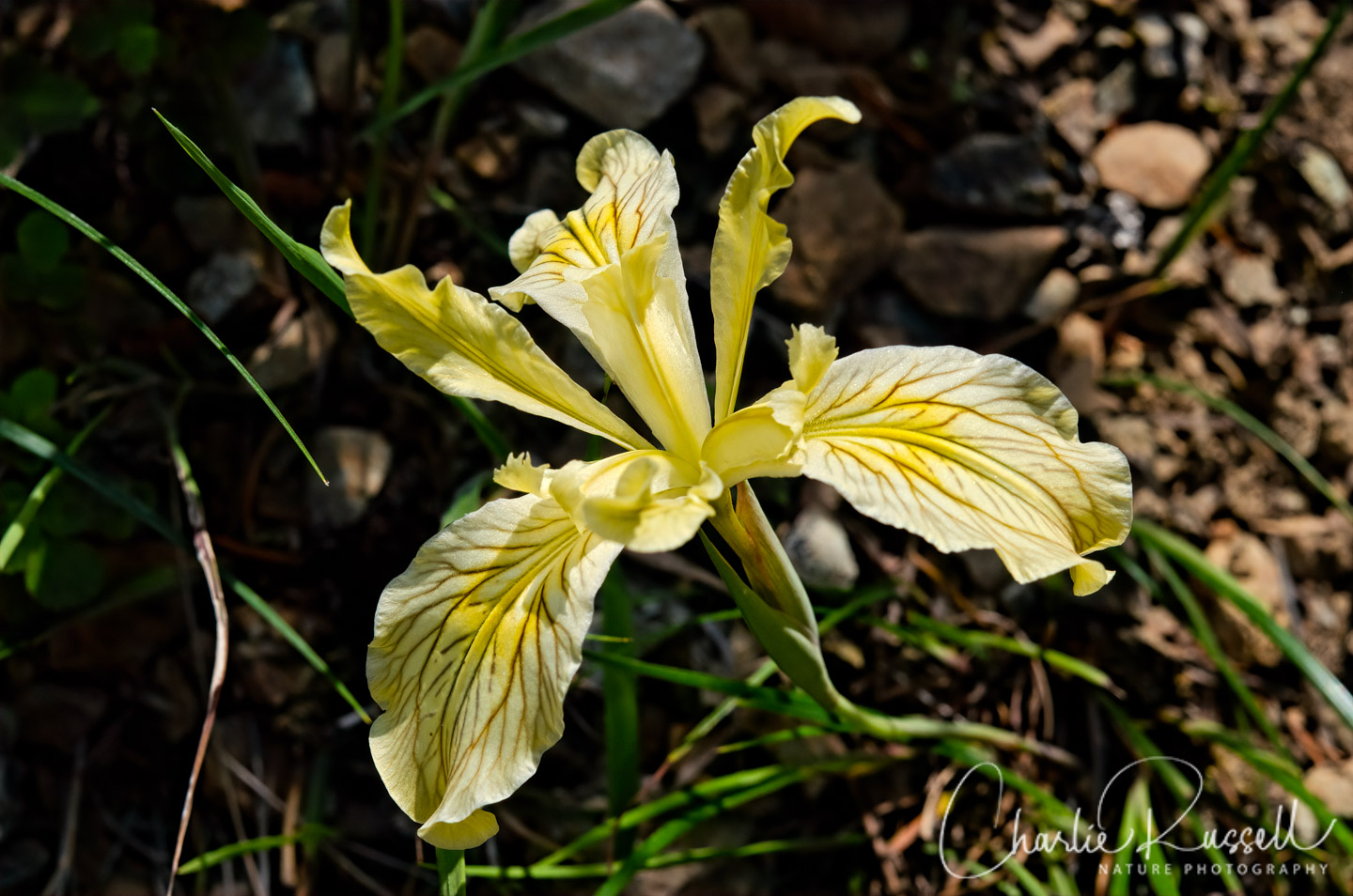
In several places where streams crossed the road we found Oregon Bleeding Heart.
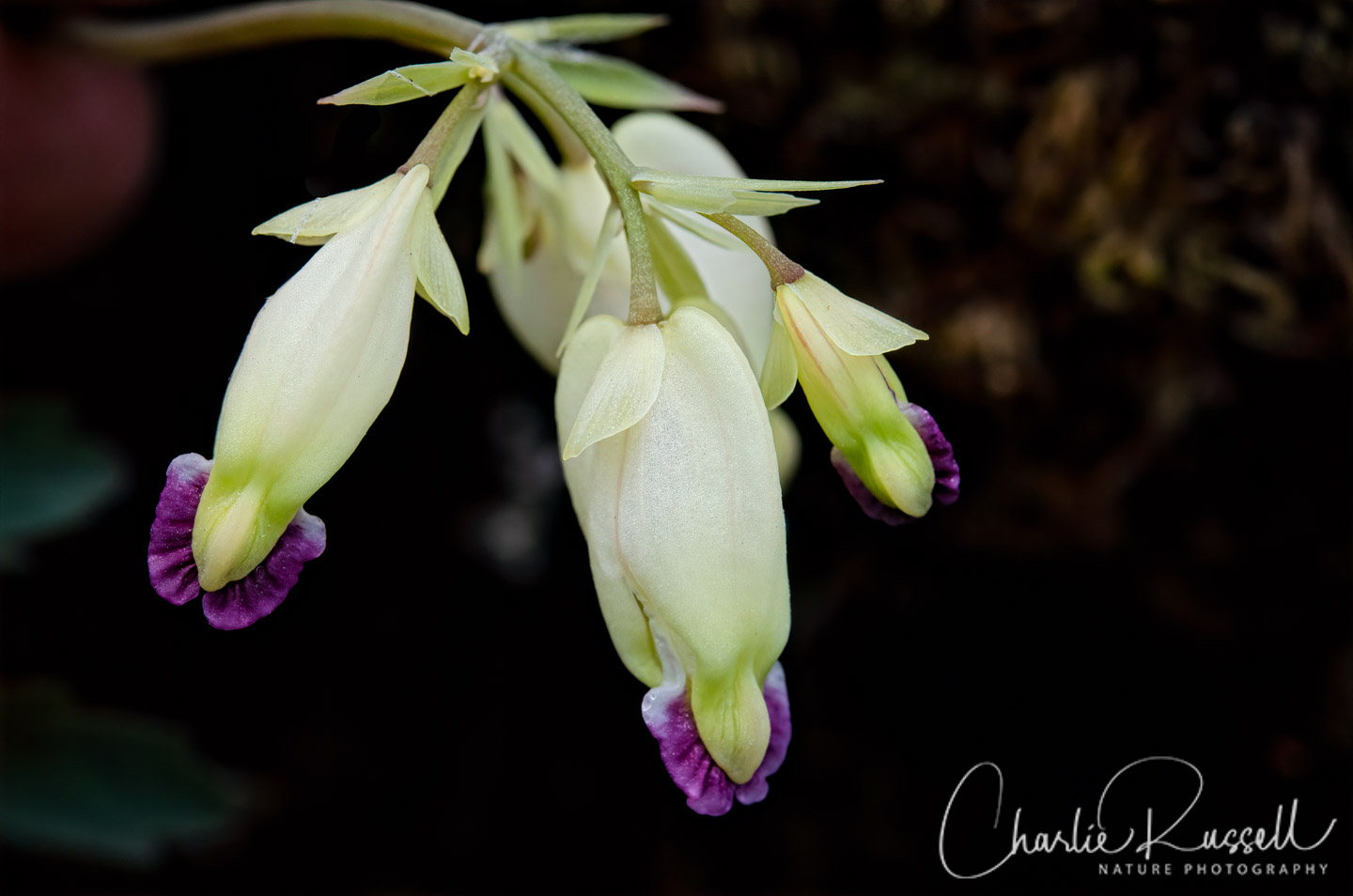
Additional Resources
Here are some links to some useful resources if you are planning on visiting the area:
- USDA Plant List for the area
- Friends of the Kalmiopsis with an overview of the area
- Oregon Wildflowers posts information about visits to the area, which helps when you are trying to figure out timing of your visit
- TJ Howell Botanical Drive, managed by the Bureau of Land Management (BLM)
- Eight Dollar Mountain Preserve, managed by the Nature Conservancy
Timing is Everything
This visit was in the first week of June of a relatively dry year. Temperatures reached the low 80’s, but since all of the flowers we saw were right along the road or on short, one to two mile hikes, the heat wasn’t a problem. There was a lot of variety, particularly near the Darlingtonia fens. Looking at the reports at Oregon Wildflowers over the years, I would say that you can find something from late March through July, but that May seems to be the peak.
Bring your own water, none is available here. Restrooms can be found by the boardwalk at the Eight Dollar Botanical Wayside, and at the Little Falls campground.
Eight Dollar Mountain Wildflower Listing
For the best viewing experience, click on the lightbox image below, and you can scroll through larger versions of the photos of many of the plants (and other things) that we found on this hike. All photos are available for purchase in a variety of formats.
Here’s a listing of the native plants that we found on this visit. The ones listed in color have a status of endangered or threatened in Oregon.
- Bach’s downingia (Downingia bacigalupii)
- Bigelow’s sneezeweed (Helenium bigelovii)
- Bluehead gilia (Gilia capitata)
- Buck Brush (Ceanothus pumilus)
- California lady’s slipper (Cypripedium californicum)
- California milkwort, Rhinotropis californica (Polygala californica)
- California pitcher plant (Darlingtonia californica)
- Common Yarrow (Achillea millefolium)
- Dwarf checkerbloom (Sidalcea asprella)
- Dwarf rose (Rosa gymnocarpa)
- Feathery false lily of the valley (Maianthemum racemosum)
- Field chickweed (Cerastium arvense)
- Fork toothed ookow (Dichelostemma congestum)
- Harvest brodiaea (Brodiaea elegans)
- Howell’s mariposa lily (Calochortus howellii)
- Largeflower rushlily (Hastingsia bracteosa var. bracteosa)
- Meadow deathcamas (Toxicoscordion venenosum, aka Zigadenus venenosus)
- Meadow larkspur (Delphinium nuttallianum)
- Mountain dogwood (Cornus nuttallii)
- Narrowleaf blue eyed mary (Collinsia linearis)
- Narrowleaf onion (Allium amplectens)
- Oregon Bleeding Heart (Dicentra formosa ssp. oregona)
- Oregon sunshine (Eriophyllum lanatum var. integrifolium)
- Pacific starflower (Lysimachia latifolia)
- Purple milkweed (Asclepias cordifolia)
- Pussy ears (Calochortus tolmiei)
- Red Mountain catchfly (Silene greenei subsp. angustifolia / Silene campanulata)
- Rosy owl’s clover (Orthocarpus bracteosus)
- Roundtooth ookow (Dichelostemma multiflorum)
- Sanddune wallflower (Erysimum capitatum)
- Seep monkeyflower (Erythranthe guttata)
- Selfheal (Prunella vulgaris)
- Serpentine phacelia (Phacelia corymbosa)
- Showy phlox (Phlox speciosa)
- Sickle leaf onion (Allium falcifolium)
- Silky horkelia (Horkelia sericata)
- Siskiyou Iris (Iris bracteata)
- Slender clarkia (Clarkia gracilis)
- Slender goldenbanner (Thermopsis gracilis)
- Slender penstemon (Penstemon gracilentus)
- Snapdragon skullcap (Scutellaria antirrhinoides)
- Spreading dogbane (Apocynum androsaemifolium)
- Western Azalea (Rhododendron occidentale)
- Western mountain aster (Symphyotrichum spathulatum)
- White rushlily (Hastingsia alba)
- Wild Hyacinth (Triteleia hyacinthina)
- Wintergreen (Pyrola spp.)
- Yellowleaf Iris (Iris chrysophylla)


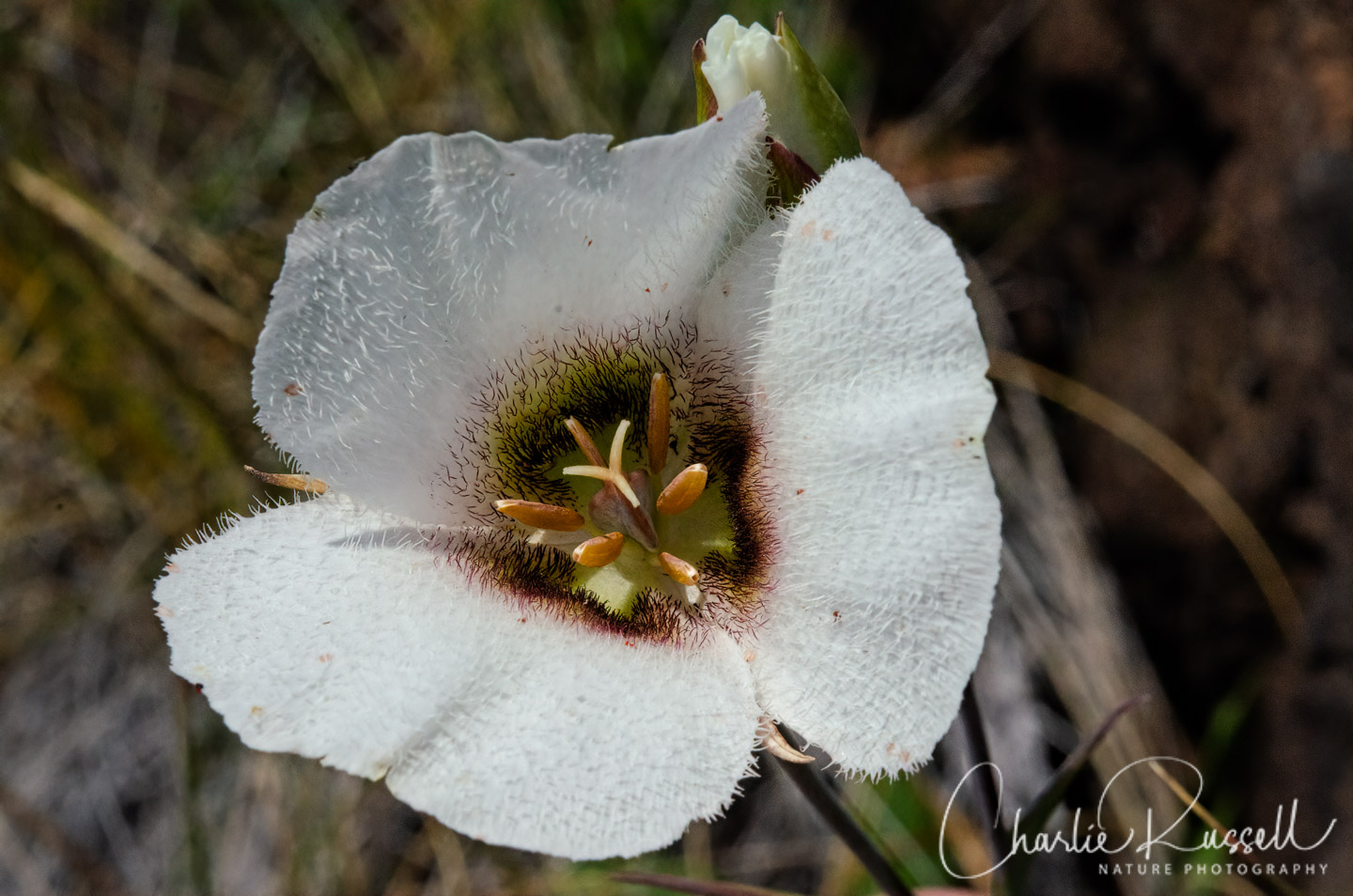
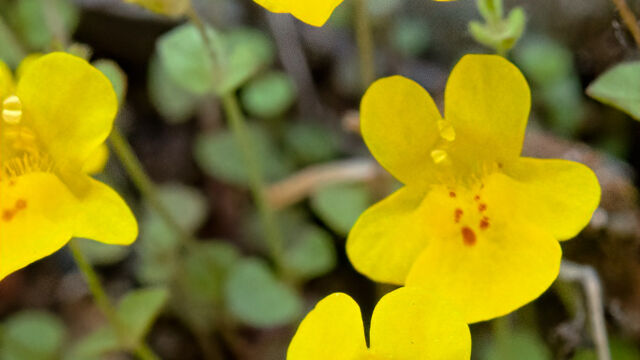
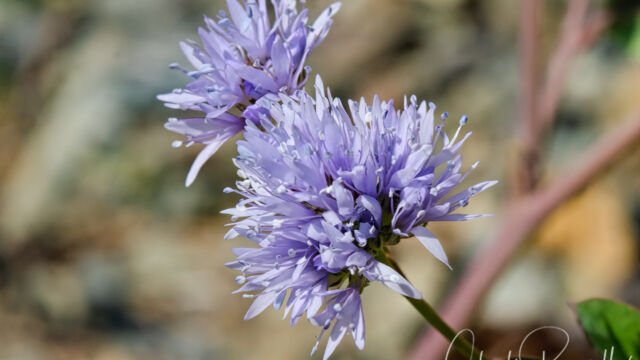
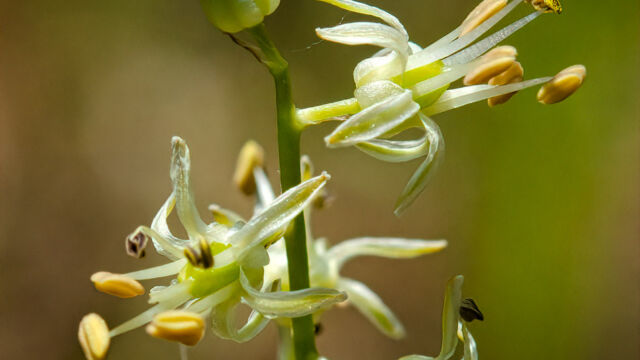
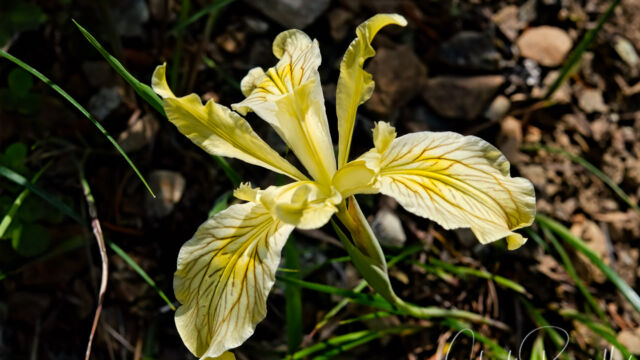
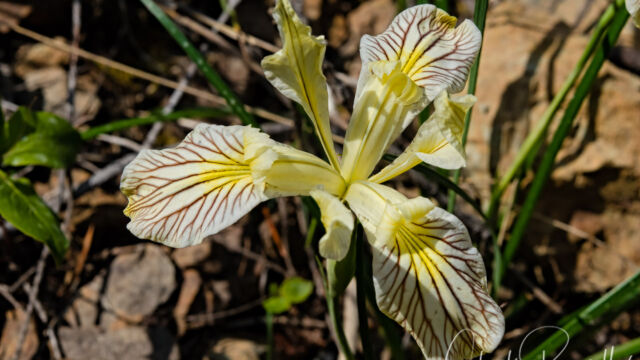
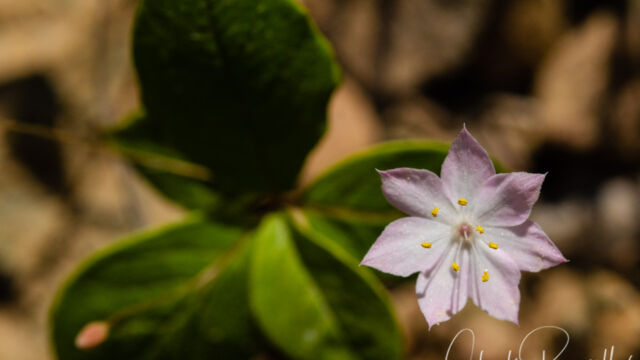
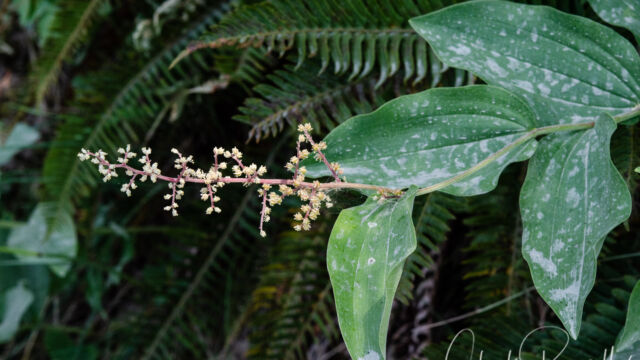
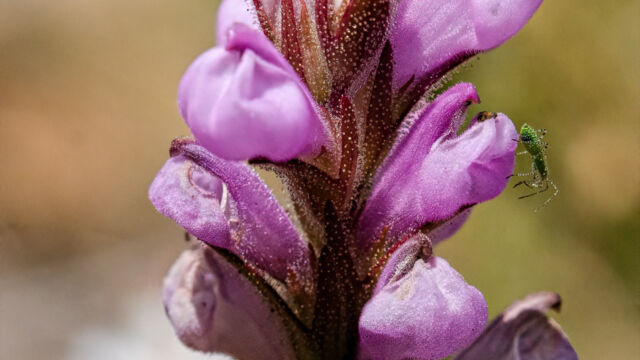
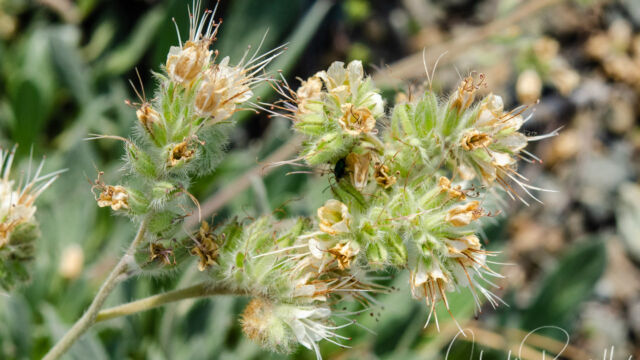
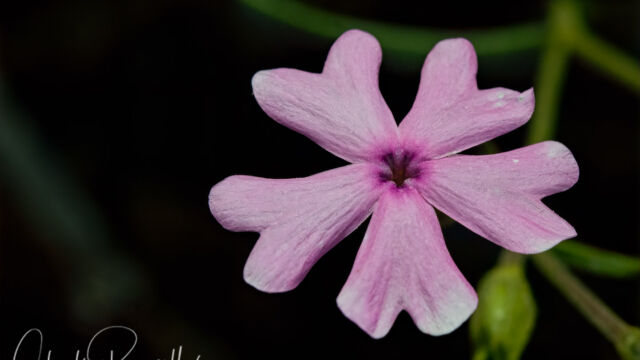


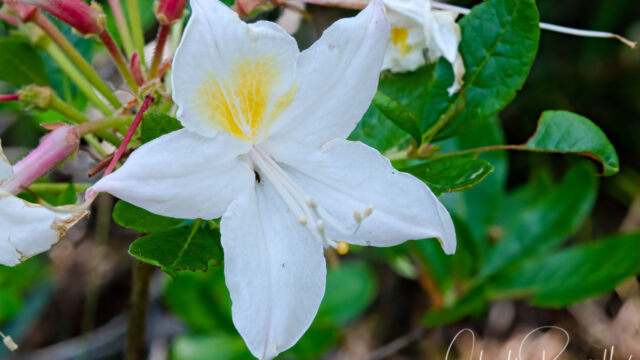
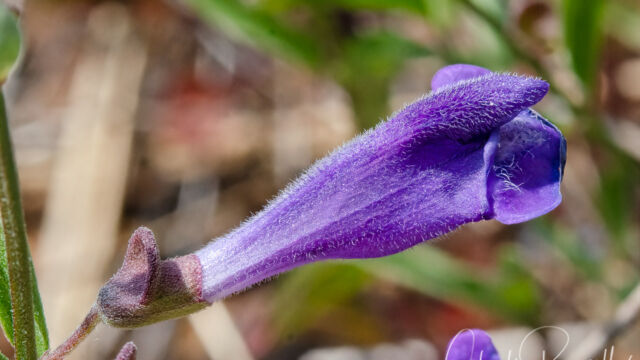

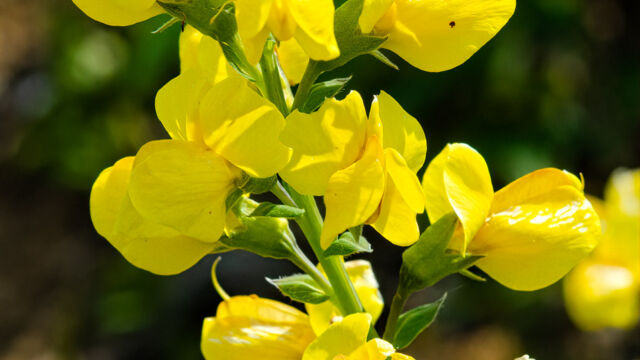
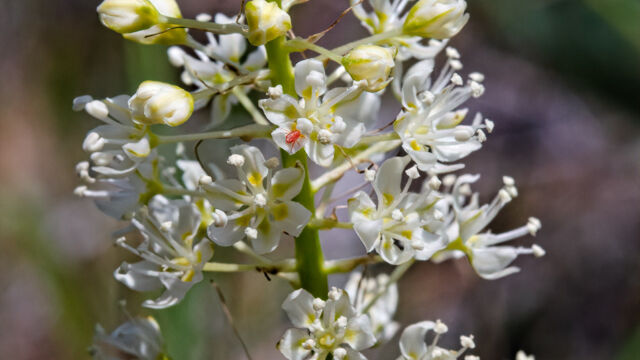
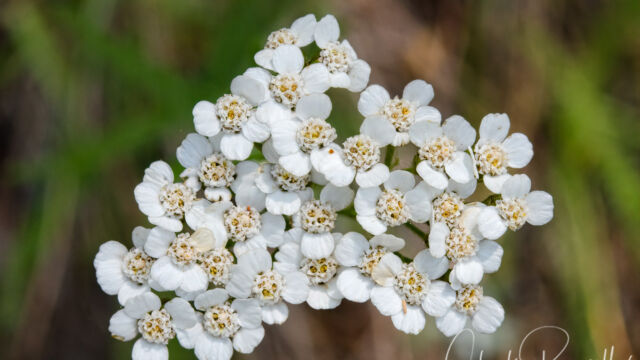
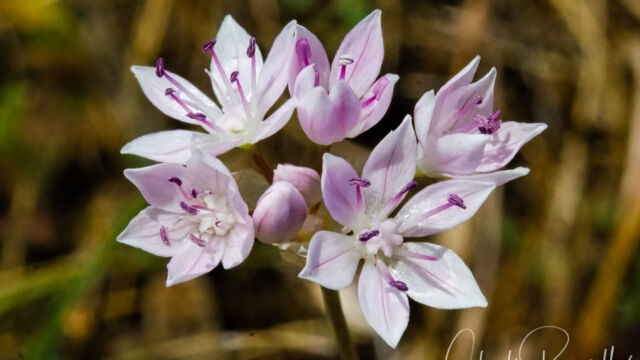
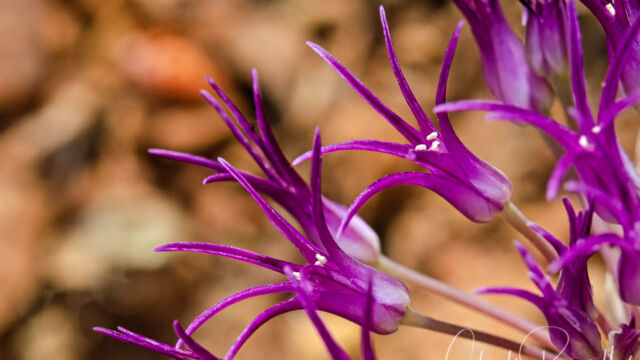
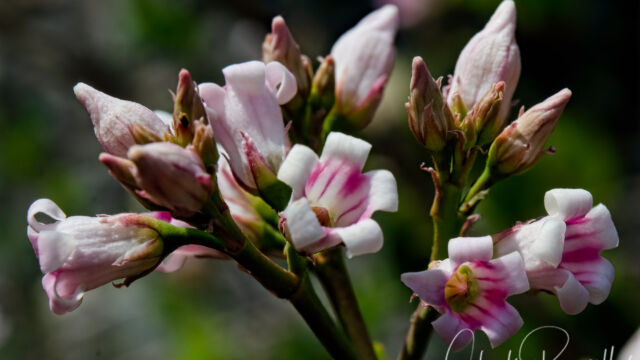


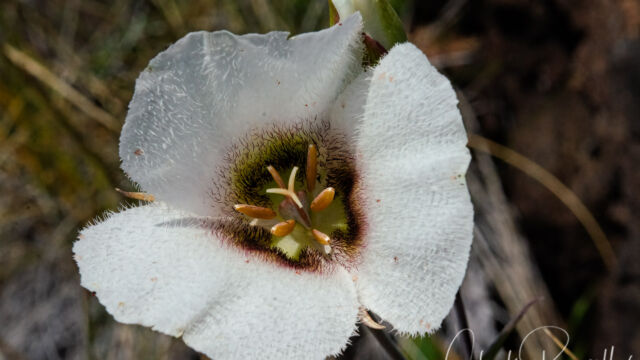
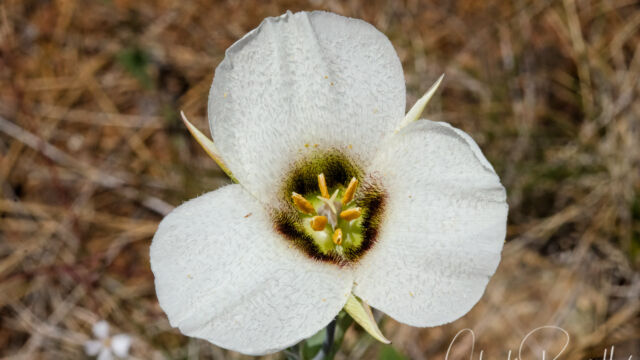
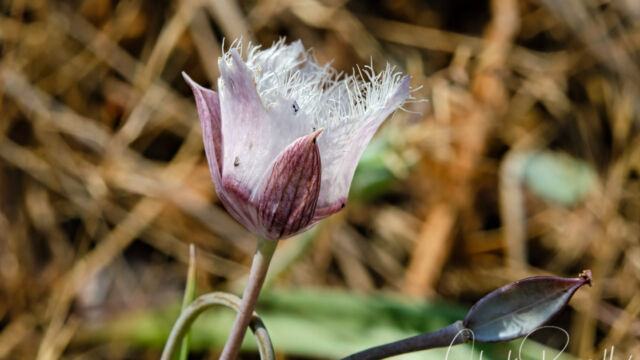
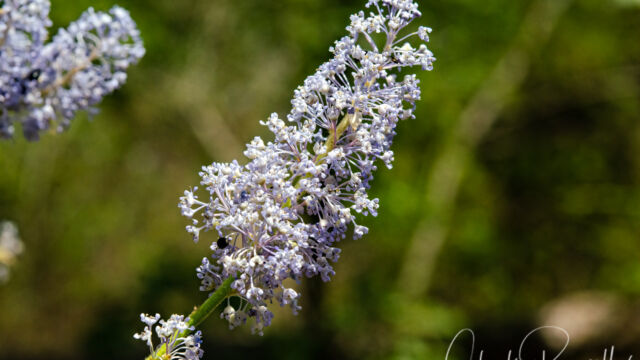
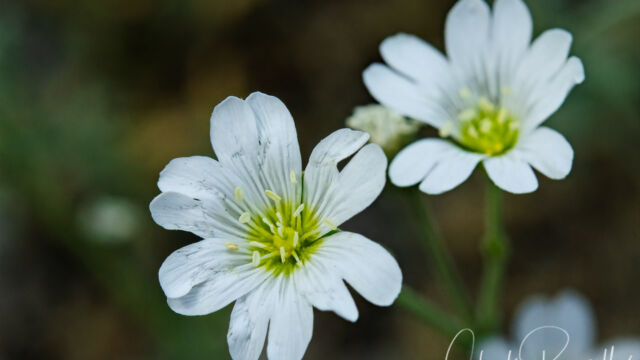
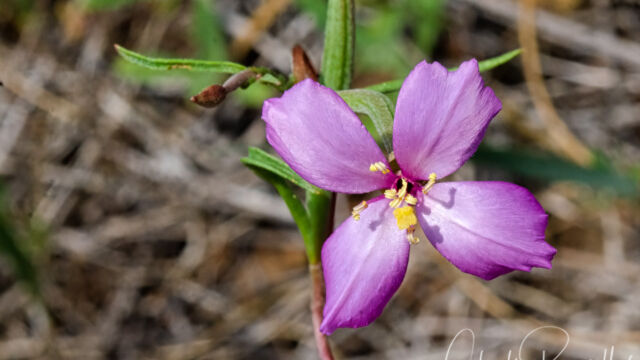

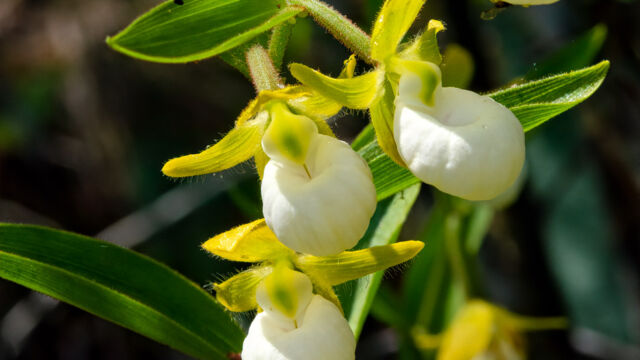

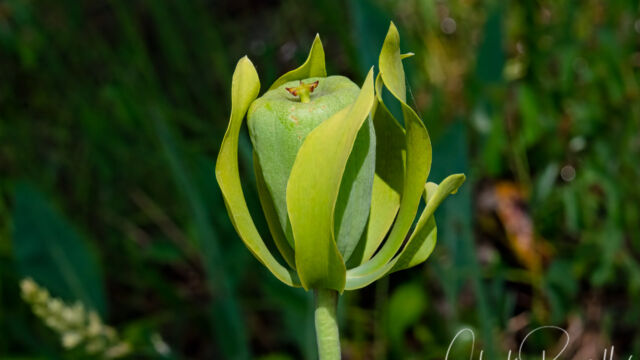
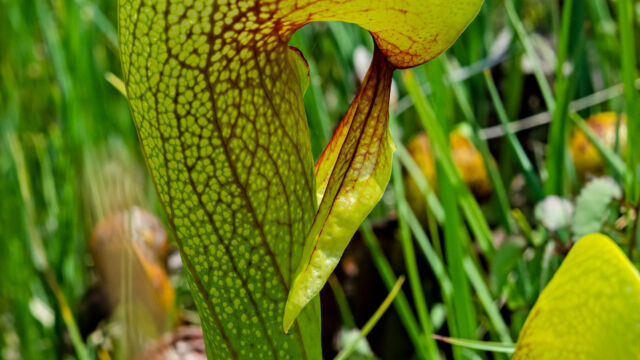
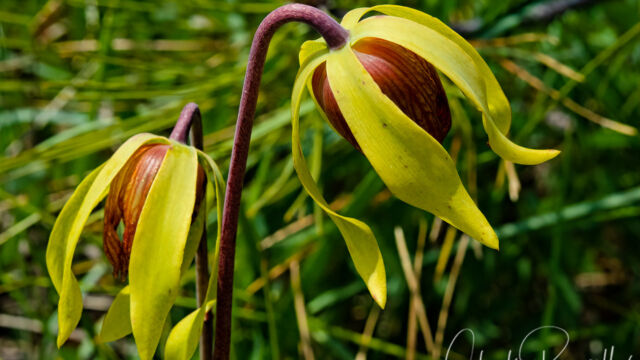
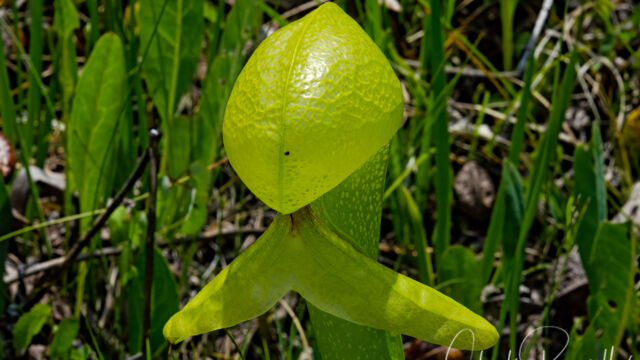
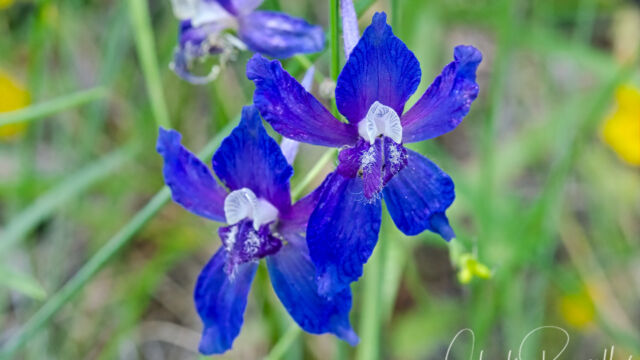
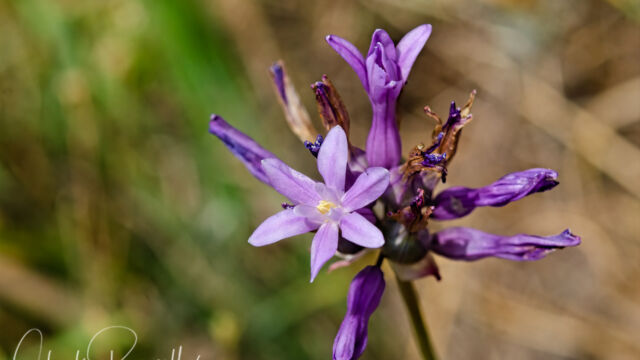

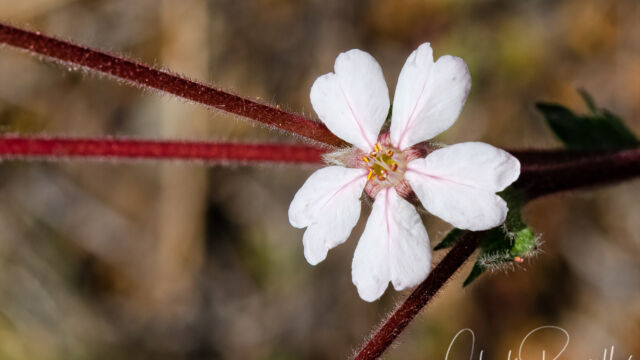
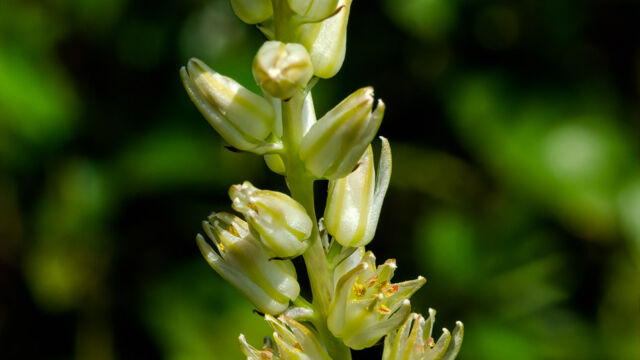
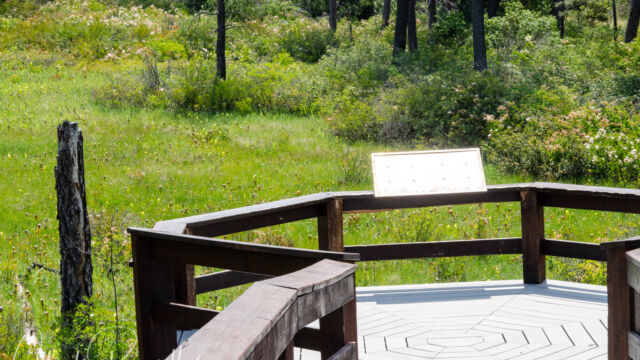
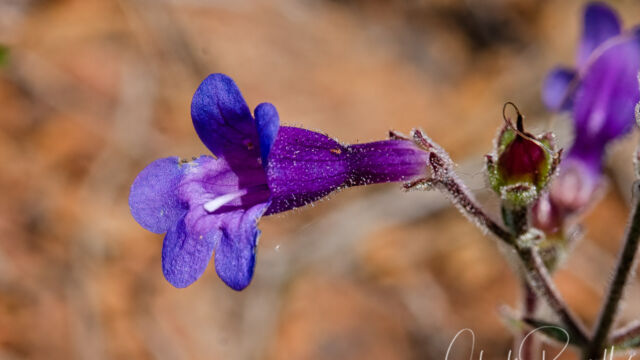
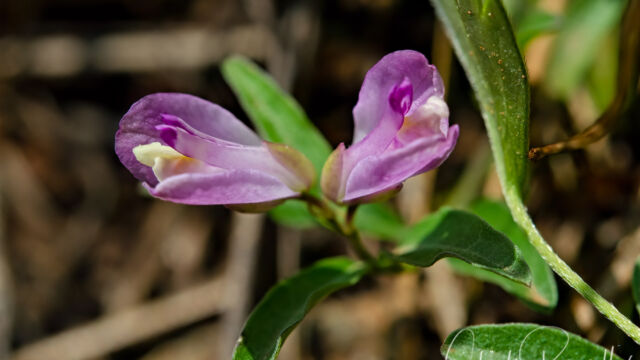
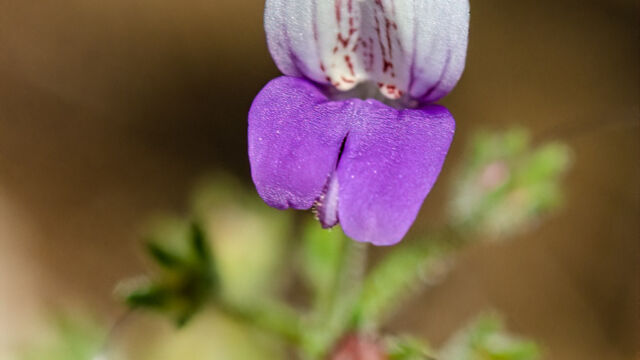
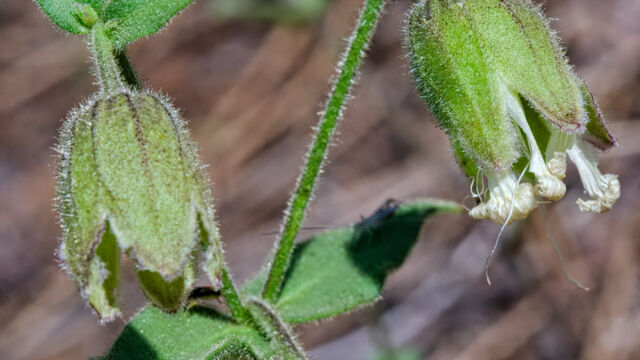
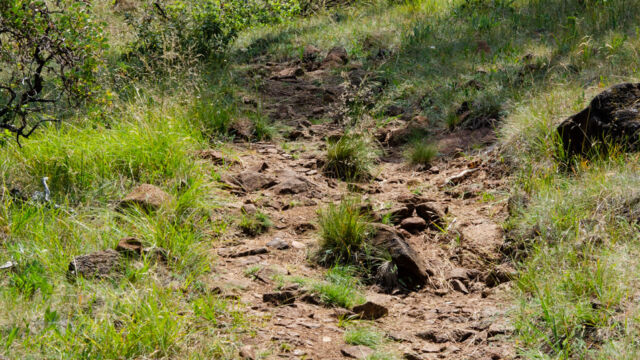
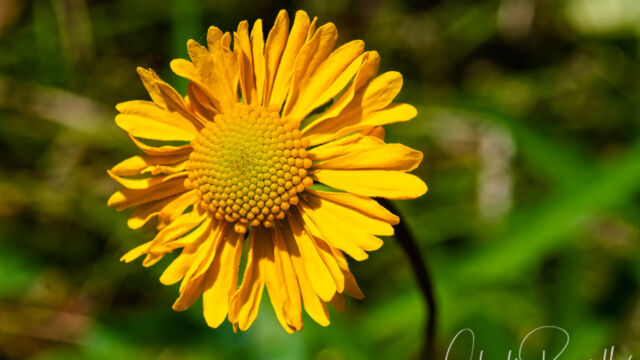

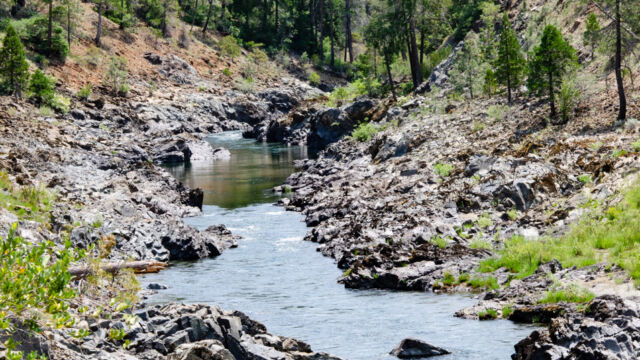
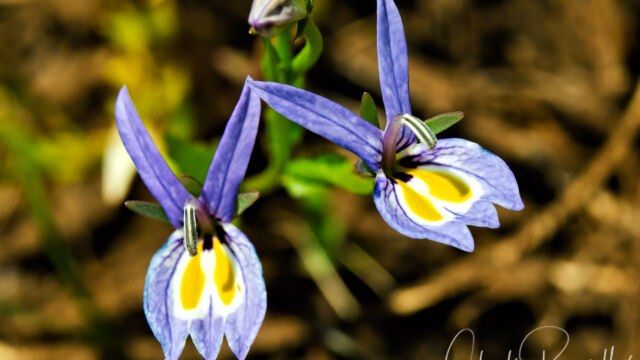
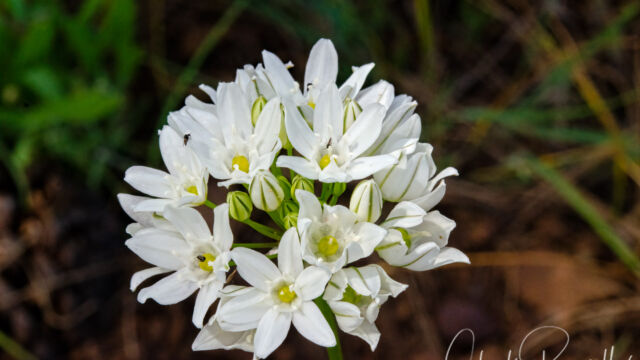

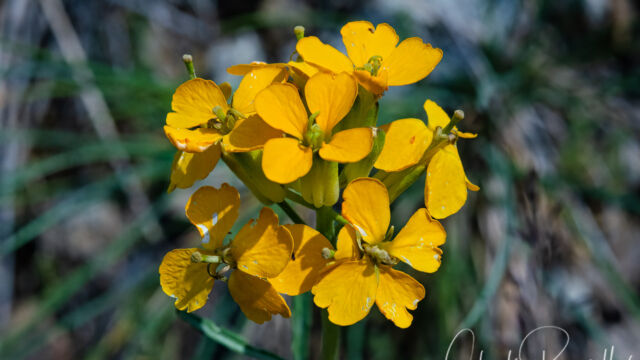
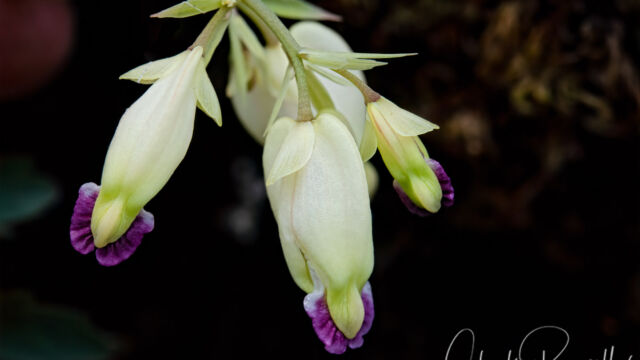
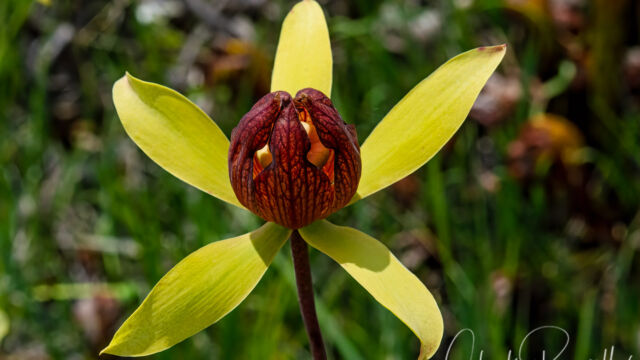
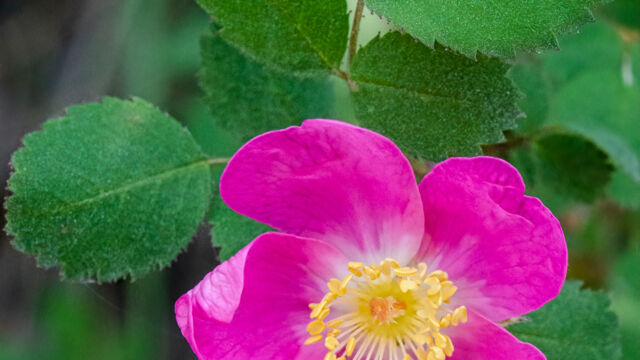
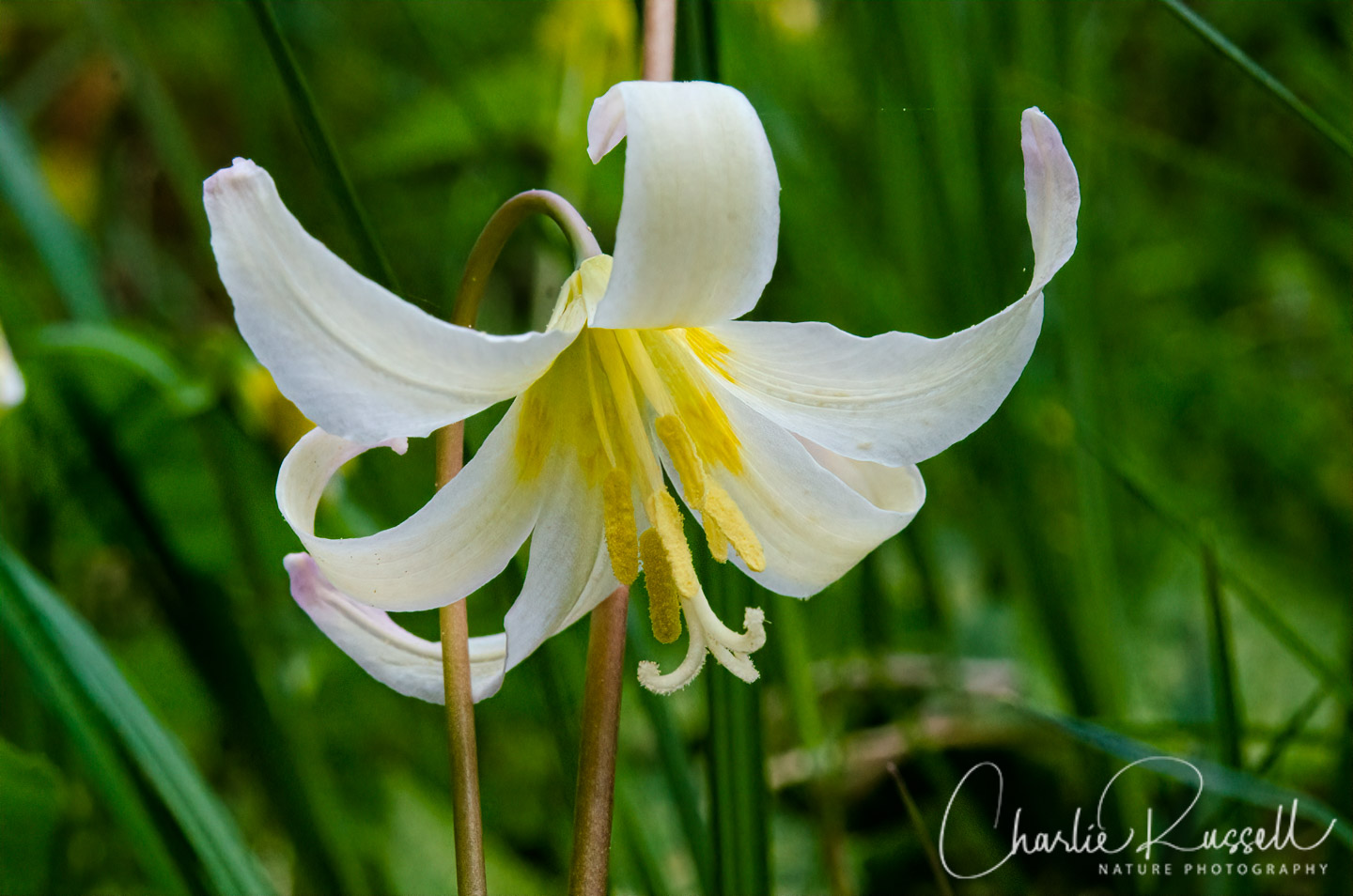
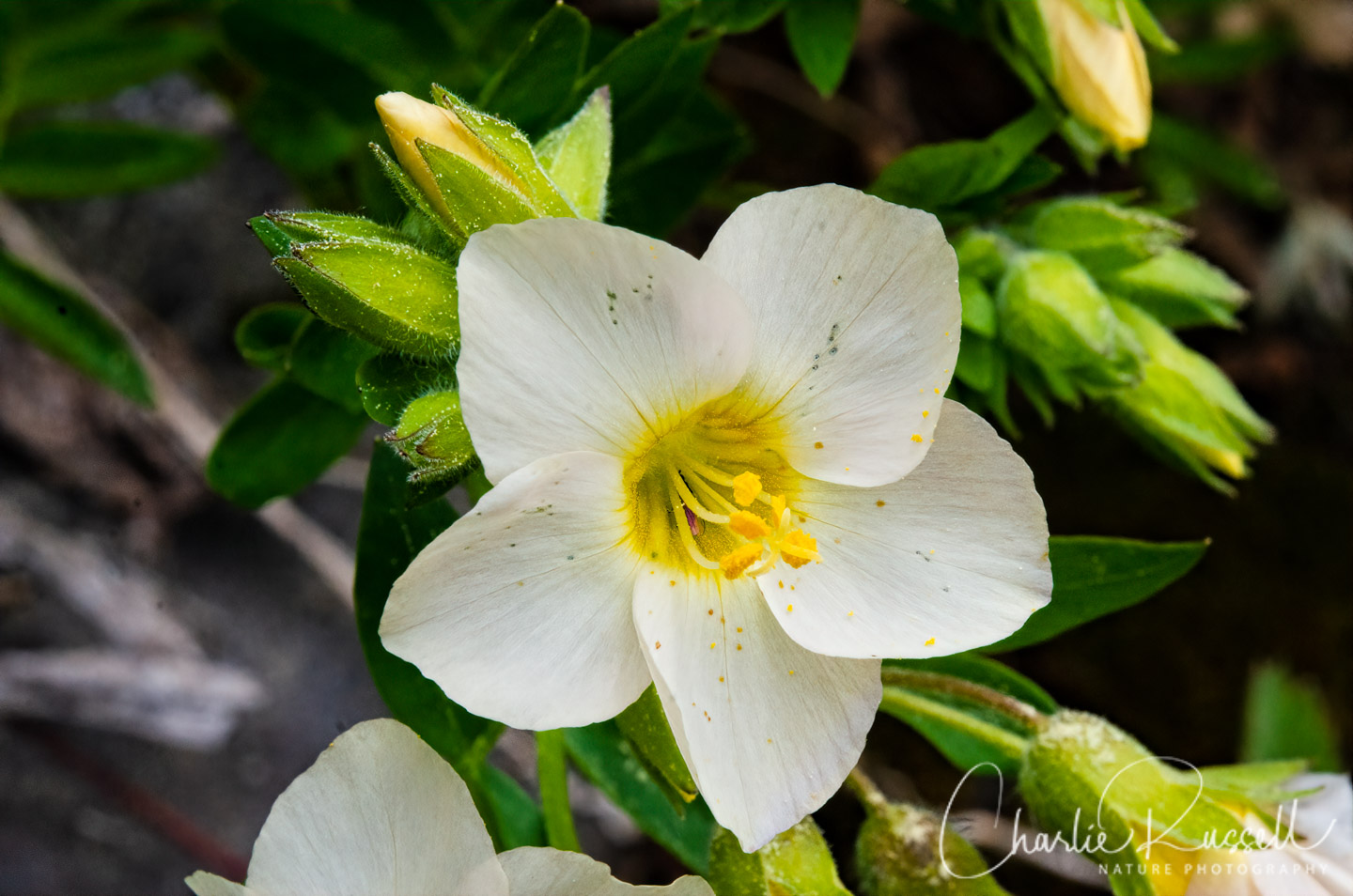
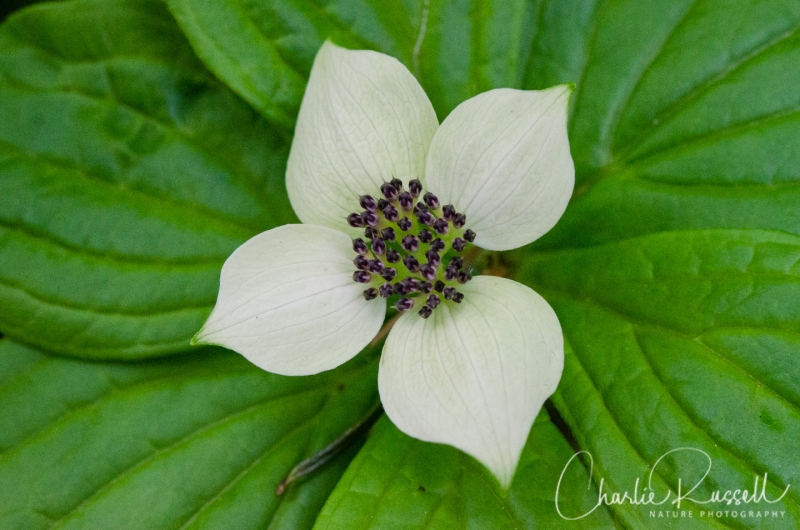
Charlie,
I can’t thank you enough for your website, the information and beautiful photos. I’m going botanizing in June to this area which I just discovered. I’ve loved and taught botany, etc. for a long time and expect this to be a highlight of my time walking through the woods , usually here in Connecticut, checking out the flora.
Eileen E. Cooper
Thanks for the nice comment! This is a great area, with a lot of variety. And there are many other interesting botanical spots that aren’t too far from here, as well